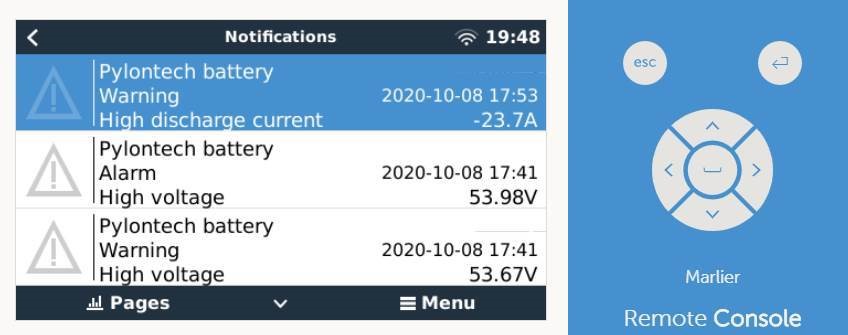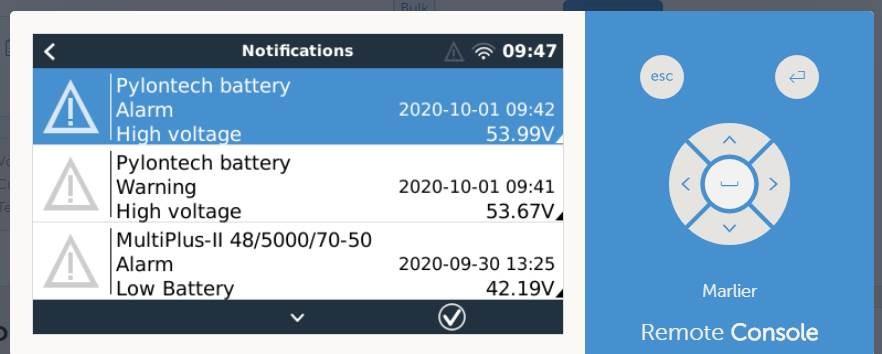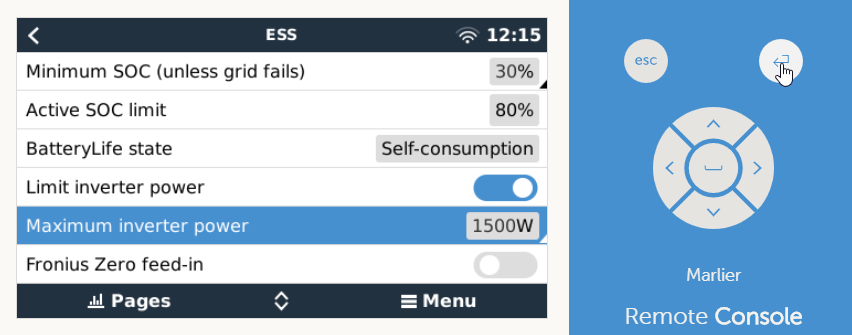Hello,
After more than one year of perfectly stable operation with a ESS system comprised of a Multi-II 5KVA and a MPPT 150/100, 2x US2000B Venus OS 2.60, always in keep batteries charged mode, (for back-up for critical appliances) we've been experiencing random high and low voltage alarms from the system, which are unusually high (almost 54VCC sometimes). No LED alarm whatsoever on the batteries. DVCC is activated, SVS is off, MPPT in slave/BMS controlled.
We're trying to figure out this for two weeks now, we're in touch with Pylontech but so far they're not giving us conclusive answers. We've changed the battery monitor from "automatic" to "Pylontech Can.Bus" today to see if it changes anything. One explanation might be that they're not designed to run under a 100% SOC for extended period of times and thus might be internal cell imbalances that are not corrected as they're not discharged and cycled. Anyone can chime in ?
Thanks in advance,





